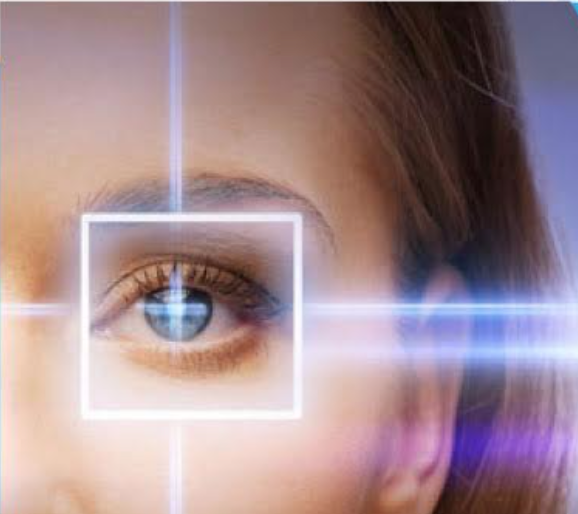The Full Malfunction of Retina Disorders and How They Impact Your Vision
The complex network of cells in the retina plays an essential role in equating light into the photos that allow us to regard the globe around us. Retina conditions can interrupt this fragile procedure, bring about a variety of vision problems. Comprehending the intricacies of these conditions is essential for realizing exactly how they affect your vision and the prospective ramifications they may have on your overall eye health and wellness. By exploring the anatomy of the retina, typical disorders that can affect it, their causes, signs, and readily available therapy options, we can gain important insights right into preserving and protecting our vision.
Overview of Retina Composition
The complex structure of the retina serves as the foundation for aesthetic perception and plays an essential function in the procedure of converting light into neural signals for the mind to translate. Situated at the back of the eye, the retina consists of numerous layers that collaborate flawlessly to help with vision. At the core of this complicated framework are photoreceptor cells called cones and rods. Poles are accountable for vision in low light problems and finding movement, while cones are vital for color vision and detailed aesthetic acuity. These photoreceptor cells transform light power right into electric signals that are then refined by various other retinal cells, such as bipolar cells and ganglion cells. The bipolar cells beam from the photoreceptors to the ganglion cells, which subsequently send these signals through the optic nerve to the mind for visual processing. Recognizing the complex composition of the retina is fundamental in understanding exactly how vision functions and exactly how different retina problems can impact visual assumption.

Usual Retina Disorders
Retina disorders include a series of conditions that impact the detailed structure of the eye liable for aesthetic processing. One common problem is age-related macular degeneration (AMD), a leading source of vision loss in individuals over 50. AMD impacts the macula, a component of the retina critical for sharp central vision, bring about blurriness or unseen areas in the central aesthetic area.
One more widespread condition is diabetic person retinopathy, happening in people with diabetes mellitus. High blood sugar level degrees damage the capillary in the retina, causing vision disability or blindness if left neglected. Retinal detachment is a major condition where the retina retreats from its regular placement, creating an unexpected onset of drifters, flashes of light, or loss of vision in a curtain-like pattern.
Finally, retinitis pigmentosa is a group of genetic disorders that cause the break down and loss of cells in the retina, leading to evening blindness and a gradual constricting of the visual area - neurologist Andalusia. Understanding these usual retina conditions is crucial in maintaining vision and seeking timely clinical treatment
Sources Of Retina Disorders
Various aspects add to the advancement of retina conditions, consisting of hereditary tendencies, way of living selections, and underlying health and wellness conditions. Genetic tendencies play a considerable function in lots of retina disorders, such as retinitis pigmentosa and macular degeneration. People with a family members background of these problems are at a higher risk of developing them because of acquired hereditary mutations impacting the retina's function.
Lifestyle options can likewise affect retina health and wellness. Smoking, for instance, has been linked to a raised risk of age-related macular deterioration, a typical retina problem that can lead to vision loss. Poor nutritional behaviors doing not have essential nutrients like vitamins A, C, and E, in addition to omega-3 fats, can likewise contribute to the development of retina disorders.
Diabetic retinopathy, a difficulty of diabetes mellitus, can create damages to the blood vessels in the retina, leading to vision problems. High blood pressure can result in hypertensive retinopathy, where high blood stress affects the blood vessels in the retina, potentially creating vision issues.
Symptoms and Medical Diagnosis
Given the substantial influence that creates such as hereditary predispositions, way of living selections, and underlying wellness problems can have on the growth of retina problems, it is essential to acknowledge the signs and utilize effective analysis approaches for early discovery and management. Signs of retina problems can vary depending on the particular condition yet might include obscured or misshaped vision, the abrupt appearance of advances or flashes of light, a dark spot in the center of your vision, or a steady loss of central vision. It is important to seek prompt medical attention. if you experience any of these symptoms.
Early detection with routine eye examinations is essential to stopping vision loss and managing retina conditions effectively. If diagnosed with a retina problem, your medical care company will function with you to establish an individualized therapy plan to maintain your vision.

Therapy Options and Monitoring
Effective management of retina disorders includes a complex strategy that integrates customized more information therapy options to resolve specific conditions and preserve visual function. Treatment options for retina disorders vary relying on the underlying reason and seriousness of the problem. In instances of retinal detachment, medical interventions such as vitrectomy or scleral buckling might be needed to reattach the my review here retina and protect against vision loss. For conditions like age-related macular deterioration (AMD), treatments like anti-VEGF injections or laser therapy can help reduce down disease development and maintain remaining vision.
In diabetic retinopathy, managing blood sugar level levels is critical to protect against more damages to the blood vessels in the retina. In addition, treatments like laser surgical treatment or shots might be suggested to decrease swelling and protect against vision loss. Regular eye exams and early discovery of retina conditions are necessary for successful management and therapy outcomes. Patients with retina conditions should function closely with their ophthalmologist to develop a personalized therapy strategy that resolves their certain requirements and aids preserve optimum aesthetic feature.
Verdict
In conclusion, understanding the composition of the retina, typical problems, creates, signs, medical diagnosis, and treatment choices is critical in taking care of vision disabilities. Retina disorders can dramatically impact vision and lifestyle, making very early discovery and appropriate monitoring essential. By staying educated concerning these problems and seeking proper healthcare, individuals can better protect their vision and preserve total eye wellness.

Comprehending the detailed makeup of the retina is basic in understanding how vision functions and just how different retina disorders can affect aesthetic assumption.
Retinal detachment is a serious disorder where the retina pulls away from its normal position, causing a sudden onset of floaters, flashes of light, or loss of vision in a curtain-like pattern.
Symptoms of retina disorders can vary depending on the particular condition but may consist of obscured or misshaped vision, the abrupt look of advances or flashes of light, a dark area in the center of your vision, or a gradual loss of central vision.In conclusion, understanding the makeup of the retina, usual conditions, triggers, signs, diagnosis, and treatment alternatives is crucial in taking care of vision problems.